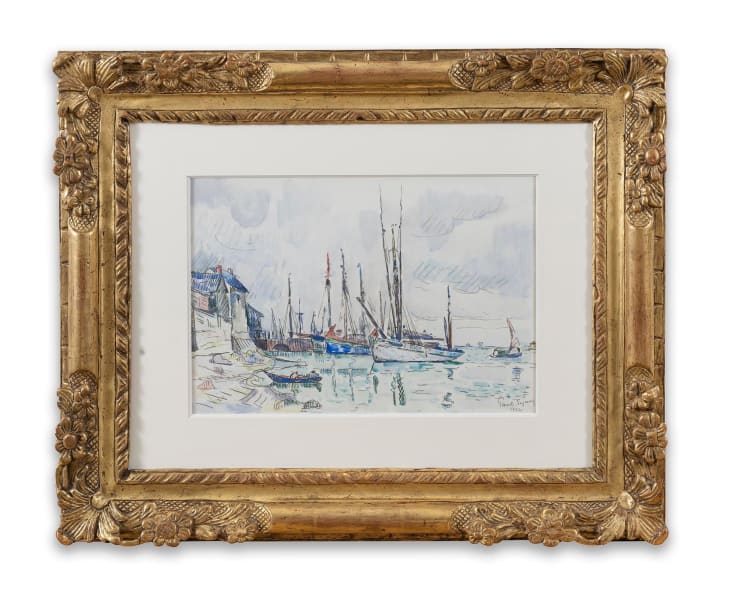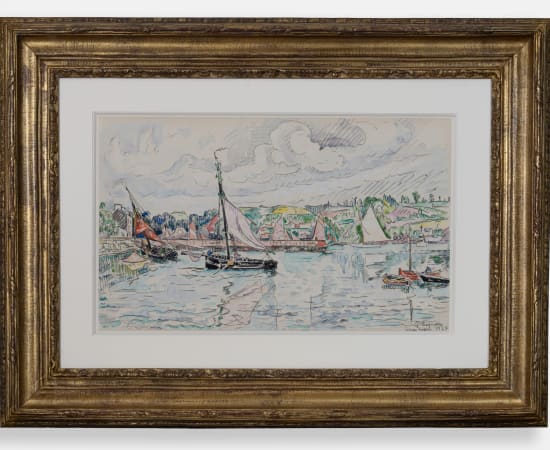Paul Signac (1863-1935) French
Пол Синьяк является одним из ведущих мастеров теории цвета и пионером в развитии современного искусства. Центральная фигура постимпрессионистического движения, Синьяк был не просто художником, но и провидцем, который переосмыслил роль цвета в создании формы и эмоции. Наибольшую известность ему принесла работа в технике пуантилизма, где он применял чистый цвет непосредственно на холсте — техника, оказавшая влияние на целые поколения художников.
Синьяк учился под влиянием Жоржа Леммена и Анри-Эдмона Кросса, а ранняя встреча с работами Сёра привела его к исследованию использования цвета как научного подхода. Его приверженность технике деления цвета — разделения цветов на маленькие, четко различимые точки пигмента — возникла из желания запечатлеть свет и атмосферу с беспрецедентной точностью. Однако, в отличие от своих современников, Синьяк распространил эту технику не только на пейзажную живопись, но и на портовые сцены, портреты и даже абстрактные формы.
Мастерство Синьяка заключалось в его способности сочетать точность метода с глубокой эмоциональной резонансностью. Его яркие и сверкающие композиции средиземноморского побережья, особенно в южной Франции, излучают чувство ритмичной безмятежности, где каждое мазок кисти способствует общей гармонии. Его работы отражают не только аналитический подход к цвету, но и исследование самой души пейзажа — видение как внешней красоты, так и внутренней истины.
В течение своей карьеры Синьяк был неустанным защитником художественного сообщества, способствовал созданию Общества независимых художников и участвовал в многочисленных выставках. Его наследие, представленное в ведущих институтах, таких как Музей Орсе, Институт искусства Чикаго и Тейт Галерея в Лондоне, представляет собой сочетание инноваций и интеллектуальной строгости, что делает его центральной фигурой в развитии современного искусства.
В галерее Бейли, где ценятся и инновации, и традиции, работы Синьяка находят естественное место. Его картины предлагают не просто визуальный опыт, а приглашают к размышлениям о взаимодействии науки, природы и эмоций. Для ценителей искусства Синьяк остается мастером композиции и цвета, чье творчество продолжает оставаться основой самых преобразующих движений в современном искусстве.



